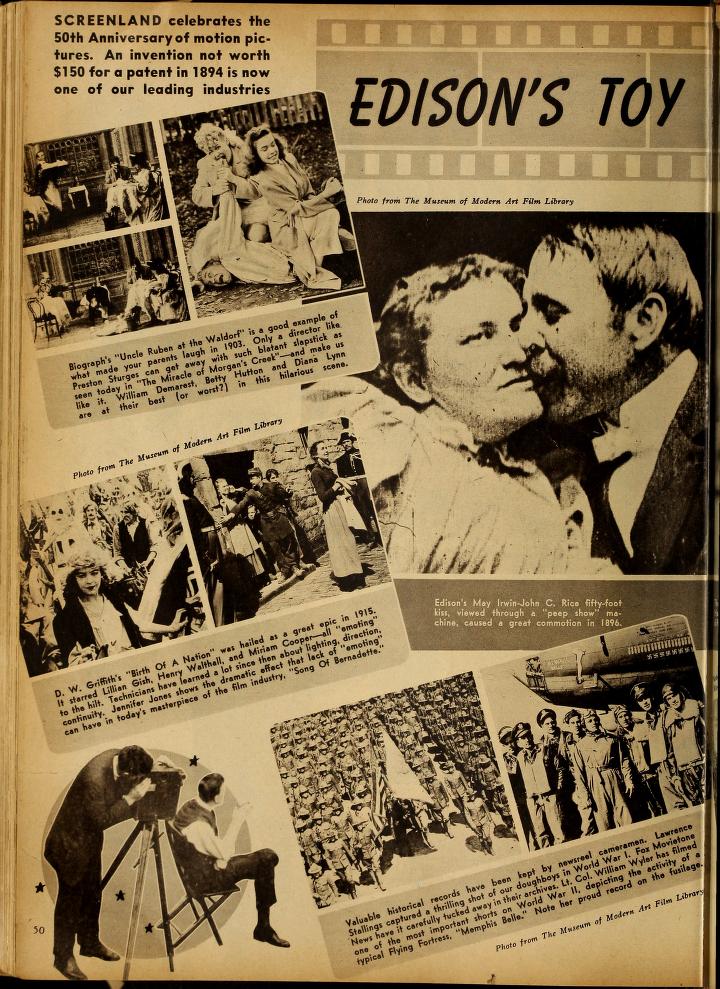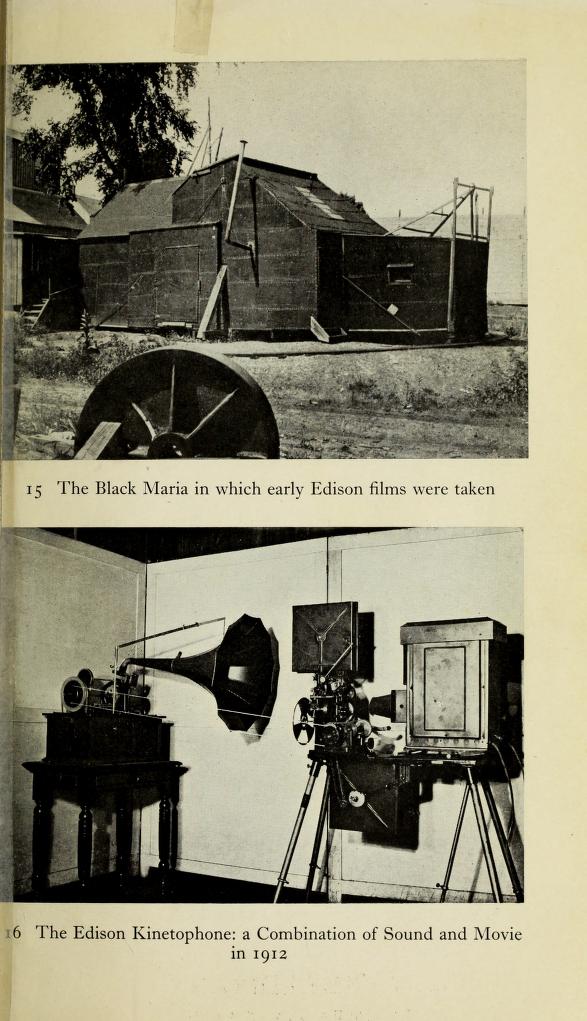Edison and The May Irwin Kiss
Kissing is one of the earliest and most enduring of cinematic subjects. In his Black Maria studio in New Jersey, Thomas Edison produced a silent, around 20-second, 35mm Kinetograph film of the actress May Irwin and actor John C. Rice performing a kiss in 1896.
According to film historian Charles Musser, "The May Irwin Kiss" (as it was often referred to) was the most popular Edison Co. film of the year.
Framed in a static medium close-up against a black backdrop, the actors mouth words to each other, cheek to cheek, until John C. Rice pulls back for a moment to ceremoniously stroke his moustache before moving in for the big event: a nibbling series of kisses planted on May Irwin’s lips. Rice kisses; Irwin is kissed. The lip-to-lip climax of the film lasts approximately three seconds.
Watching The Kiss
Audiences at the time could have watched The May Irwin Kiss in two very different ways. Some would have paid to see the film in a single-viewer Kinetoscope device in a storefront parlor, peering into a box to watch the images move before their eyes. This was the first form of motion picture exhibition in the United States.
Some Kinetoscopes included a headphone device to allow the viewer to hear a phonograph playing music. These Kinetophones married the Kinetoscope viewer with Edison's earlier invention: the phonograph. As Edison wrote in 1888, "I am experimenting upon an instrument which does for the Eye what the phonograph does for the Ear.”
The first Kinetoscope viewers could only hold around 50 feet of film, so films made for exhibition in Kinetoscope parlors could last at most around 20 seconds. Our truncated attention spans in the twenty-first century are very compatible with moving image material of this length. The fact that limited duration images (such as “Vine” videos, which are only seconds in length) and thoughts (Twitter) prevail at our current moment is a curious circularity.
"The May Irwin Kiss" also circulated at a time of transition between individual, Kinetoscope viewing and the start of projected film programming in the United States.
In the late spring of 1896, some audiences (at first in major cities) could have experienced the film as part of a longer program of short films edited together and projected with Edison's "latest" and "greatest" marvel," the Vitascope projector, which premiered in New York on April 23, 1896.
Kissing Throughout Film History
Edison’s catalog description of this early screen kiss promises something much more salacious (at least to a modern-day mind!) than appears in the actual film:
“They get ready to kiss, begin to kiss, and kiss and kiss and kiss in a way that brings down the house every time.”
One of the things we can learn from our modern perception of this rousing catalog description alongside the stagey innocence of the actual film is that screen kissing often illustrates—through affirmation or provocation—our culture’s tolerances and intolerances.
Screen representations of kissing between different races or between same sex couples, for example, nicely demonstrate permissible physical contact not only on screen but also in a society at a given time.
The famous cultural milestone kisses between Sidney Poitier and Katharine Houghton in Guess Who’s Coming to Dinner (1967) (glimpsed by their taxi driver in the rearview mirror), or between Jake Gyllenhall and Heath Ledger in Brokeback Mountain (2005) nicely clarify such pivotal moments in mainstream Hollywood representations.













